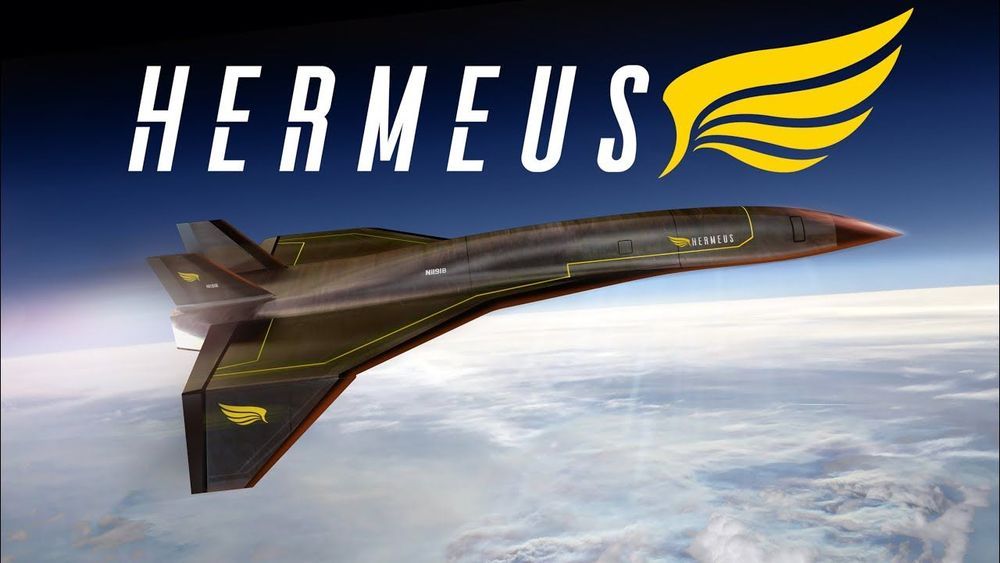Aug 6, 2020
Intel hacked: Confidential intellectual data obtained and leaked
Posted by Quinn Sena in category: futurism
An anonymous hacker claims to have obtained confidential Intel files, and has leaked them in a file-sharing folder.
An anonymous hacker claims to have obtained confidential Intel files, and has leaked them in a file-sharing folder.
For the first time, scientists have detected neutrinos coming from the Sun’s core that got their start via the CNO process, an until-now theorized type of stellar nuclear fusion.
This is really cool, but it’ll take a bit of explaining.
Very odd posssibly some life form or possibly energy wave.
Space Mysteries: When scientists put their ear to the early universe, they found it yelled back.
Hypersonic weapons are the next frontier of great power competition between the United States, Russia, and China. The Army and Navy want to expedite the development of the missile and hope to field it in 2023.
Their latest missile test was a success.
By Caleb Larson
Continue reading “The Army and Navy’s Hypersonic Missile is a Go” »
Could find the coronavirus kill switch and shut it off then let the immune system eat the remainder.
A single protein derived from a common strain of bacteria found in the soil will offer scientists a more precise way to edit RNA.
The protein, called AcrVIA1, can halt the CRISPR-Cas13 editing process, according to new research from Cornell, Rockefeller University and the Memorial Sloan Kettering Cancer Center published in the journal Science July 3.
Continue reading “Listeria protein provides a CRISPR ‘kill switch’” »
By formulating positively charged fluorescent dyes into a new class of materials called small-molecule ionic isolation lattices (SMILES), a compound’s brilliant glow can be seamlessly transferred to a solid, crystalline state, researchers report August 6 in the journal Chem. The advance overcomes a long-standing barrier to developing fluorescent solids, resulting in the brightest known materials in existence.
“These materials have potential applications in any technology that needs bright fluorescence or calls for designing optical properties, including solar energy harvesting, bioimaging, and lasers,” says Amar Flood, a chemist at Indiana University and co-senior author on the study along with Bo Laursen of the University of Copenhagen.
“Beyond these, there are interesting applications that include upconverting light to capture more of the solar spectrum in solar cells, light-switchable materials used for information storage and photochromic glass, and circularly polarized luminescence that may be used in 3D display technology,” Flood says.
ST. LOUIS (KTVI) — The Perseid meteor shower is now underway and is about one week from its mid-August peak.
Considered the best meteor shower of the year, you can see up to 50 meteors per hour, according to NASA, and sometimes even more if conditions are right. The fast and bright meteors often leave long wakes of light behind them as they streak through the atmosphere, making them easy to see even for the casual astronomer.
The Perseids get their name from the constellation Perseus because they appear to radiate from that spot in the sky, but the constellation isn’t the source. When comets come around the sun, they leave a dusty trail behind them. This time each year, Earth passes by debris from the comet Swift-Tuttle, which burns up in our atmosphere.
1. Dark horses of QC emerge: 2020 will be the year of dark horses in the QC race. These new entrants will demonstrate dominant architectures with 100–200 individually controlled and maintained qubits, at 99.9% fidelities, with millisecond to seconds coherence times that represent 2x\u200a-3x improved qubit power, fidelity and coherence times. These dark horses, many venture-backed, will finally prove that resources and capital are not sole catalysts for a technological breakthrough in quantum computing.”,” protected”:false},” excerpt”:{“rendered”:”
Quantum computing will represent the most fundamental acceleration in computing power that we have ever encountered, leaving Moore’s law in the dust.

Hermeus, a startup backed by venture capital, won a contract to develop an Air Force One plane that can fly at Mach 5, or hypersonic speeds.
A quintillion calculations a second. That’s one with 18 zeros after it. It’s the speed at which an exascale supercomputer will process information. The Department of Energy (DOE) is preparing for the first exascale computer to be deployed in 2021. Two more will follow soon after. Yet quantum computers may be able to complete more complex calculations even faster than these up-and-coming exascale computers. But these technologies complement each other much more than they compete.
It’s going to be a while before quantum computers are ready to tackle major scientific research questions. While quantum researchers and scientists in other areas are collaborating to design quantum computers to be as effective as possible once they’re ready, that’s still a long way off. Scientists are figuring out how to build qubits for quantum computers, the very foundation of the technology. They’re establishing the most fundamental quantum algorithms that they need to do simple calculations. The hardware and algorithms need to be far enough along for coders to develop operating systems and software to do scientific research. Currently, we’re at the same point in quantum computing that scientists in the 1950s were with computers that ran on vacuum tubes. Most of us regularly carry computers in our pockets now, but it took decades to get to this level of accessibility.
In contrast, exascale computers will be ready next year. When they launch, they’ll already be five times faster than our fastest computer – Summit, at Oak Ridge National Laboratory’s Leadership Computing Facility, a DOE Office of Science user facility. Right away, they’ll be able to tackle major challenges in modeling Earth systems, analyzing genes, tracking barriers to fusion, and more. These powerful machines will allow scientists to include more variables in their equations and improve models’ accuracy. As long as we can find new ways to improve conventional computers, we’ll do it.
